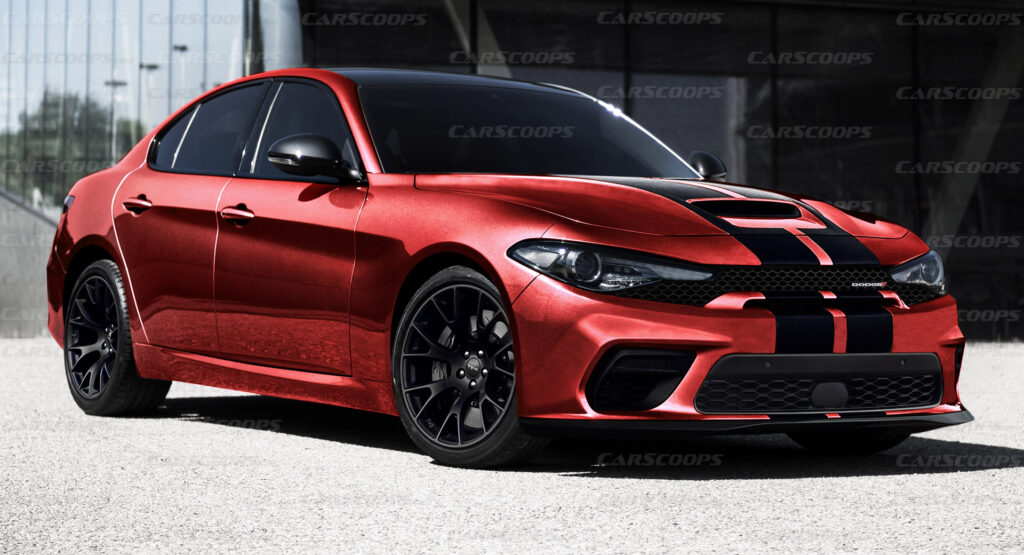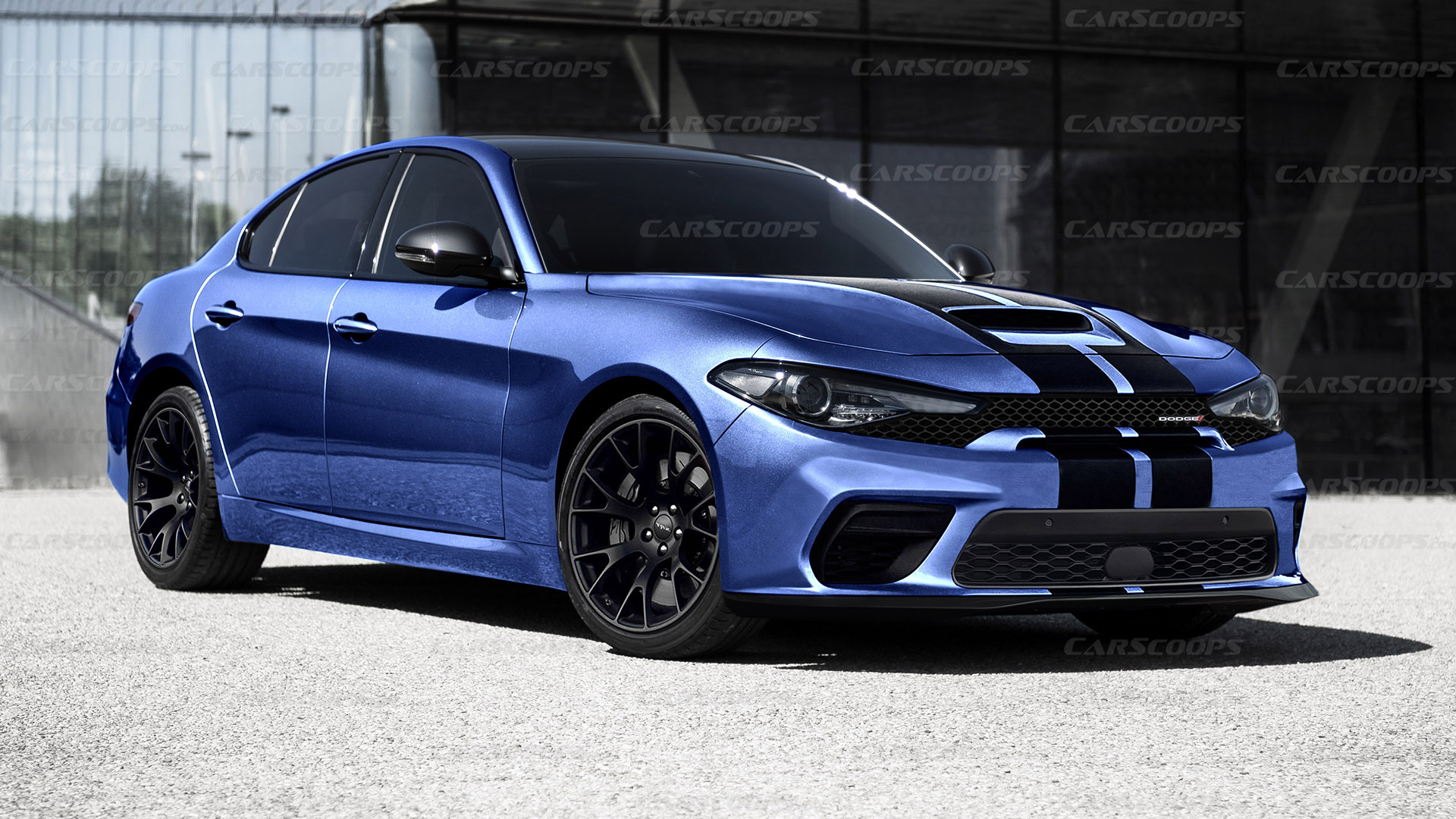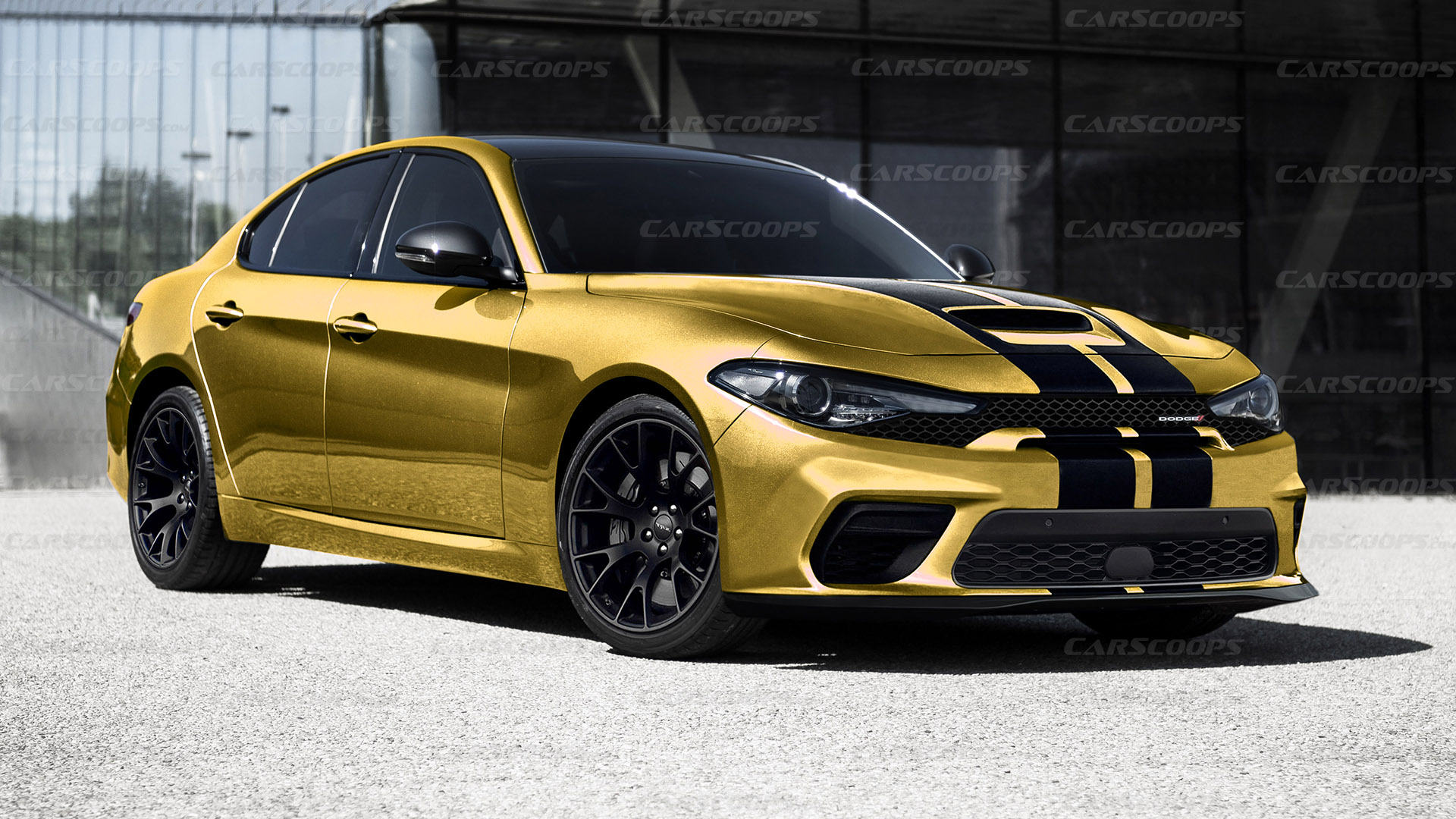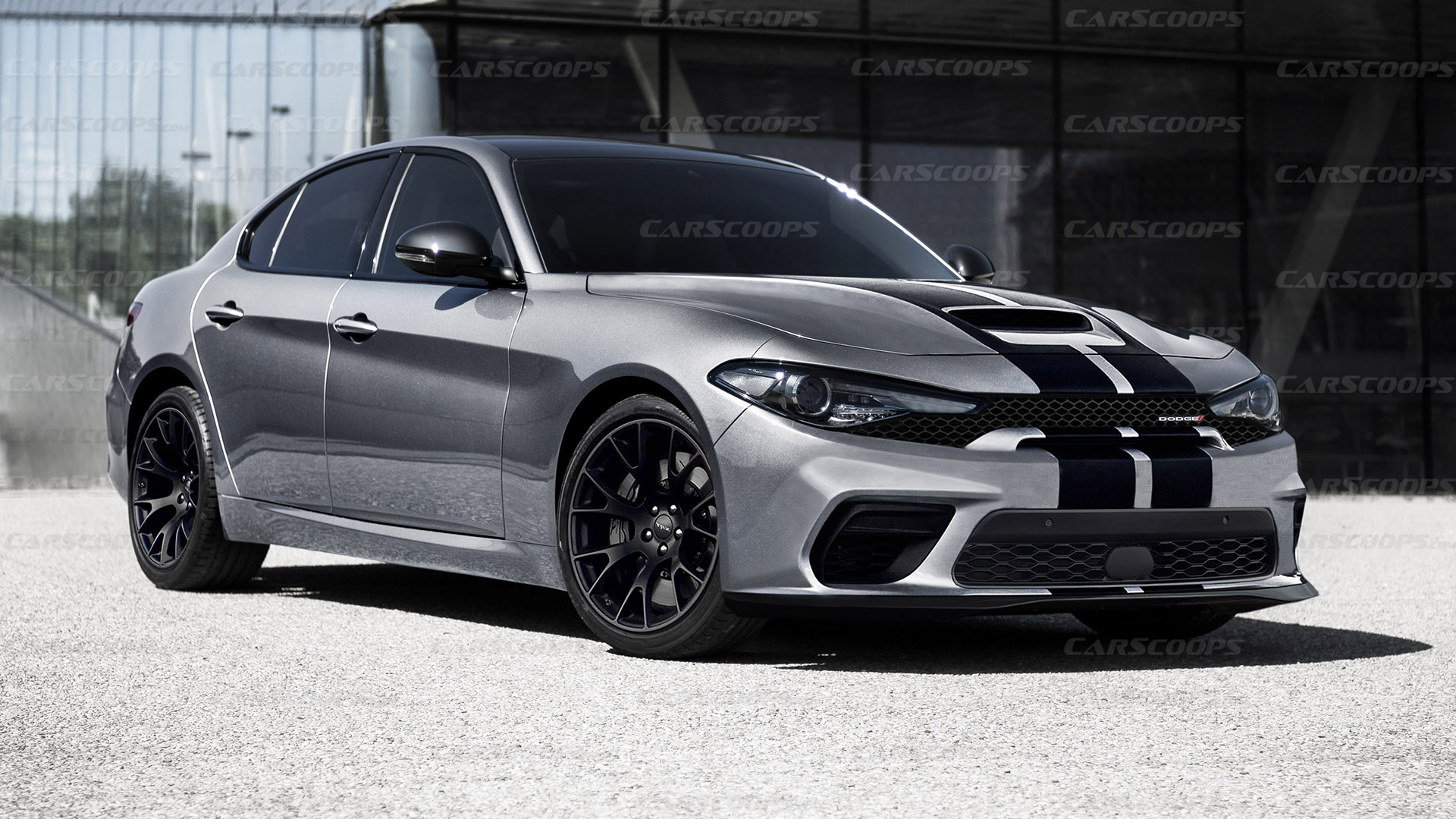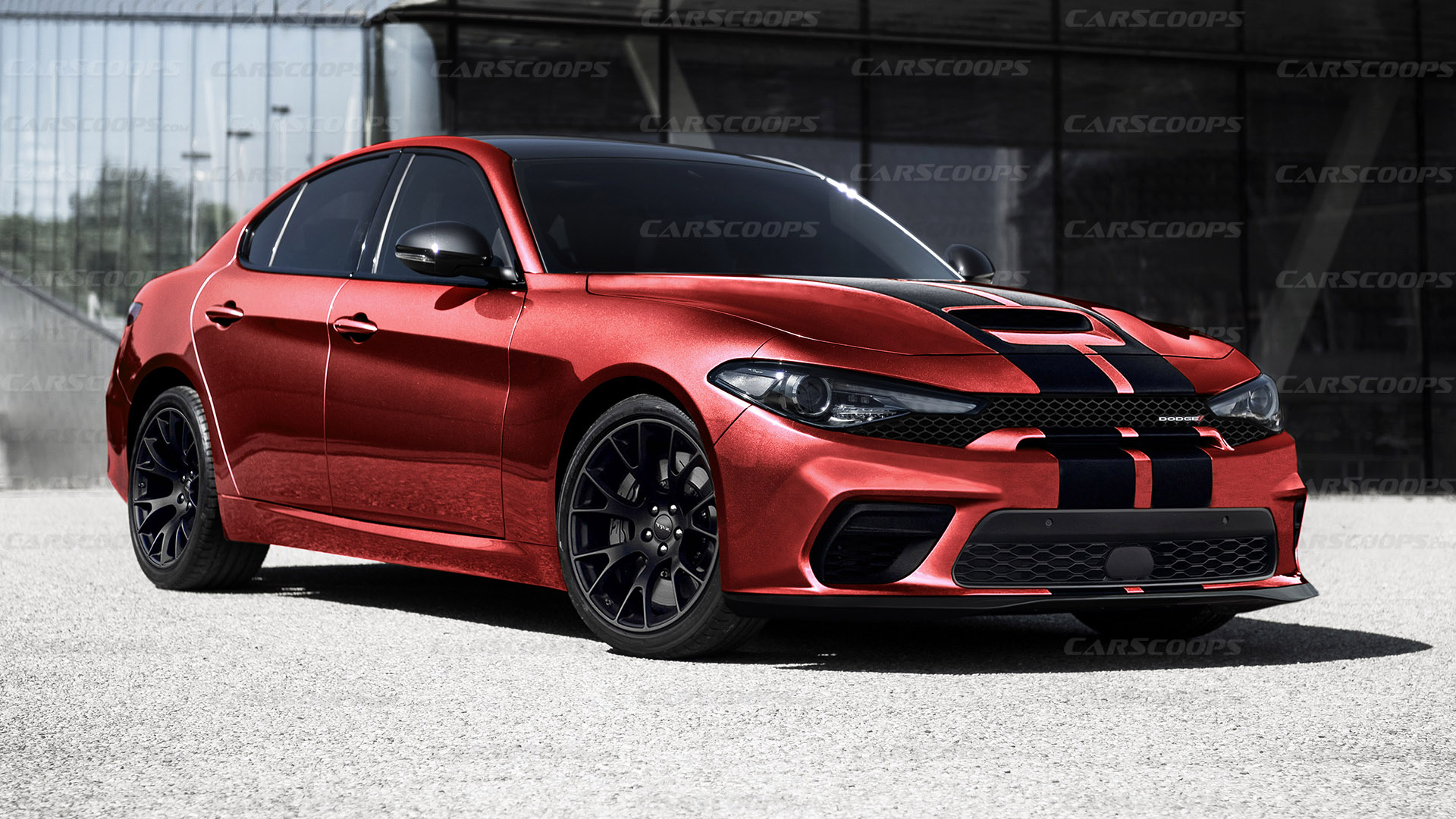This story contains independent illustrations of an imaginary Dodge-branded Alfa Romeo Giulia created by Thanos Pappas for CarScoops that are neither related to nor endorsed by Dodge or Alfa Romeo.
The fact that the upcoming Dodge Hornet will be a rebadged version of the Alfa Romeo Tonale made us wonder what would happen if the two Stellantis brands took things further in terms of badge engineering. Thus, we envisioned Dodge’s version of the Alfa Romeo Giulia as an imaginary Italian-American marriage that never happened.
Platform sharing is so common in our world that automakers don’t even try to hide it. Still, most automotive groups and alliances have moved on from badge engineering, offering unique body panels for sibling models in order to comply with each brand’s design language. Those range from as much as the entire bodywork, to as little as the front fascia. Since the Dodge Hornet is closer to the second scenario, we decided to keep changes minimal for the sedan.
Read Also: Will Dodge’s Move To Rebadge The Tonale Hurt Alfa Romeo’s Image In America?
As you can see from the renderings, we kept most of the Giulia’s body panels and its lighting units intact. Naturally, changes are focused on the front end, with a redesigned bumper and bonnet inspired by the Dodge Charger SRT Hellcat Redeye. The new grille connects the elongated headlights of the Giulia, effectively replacing Alfa Romeo’s iconic scudetto. The large bumper intakes and the pronounced splitter make up for a rather aggressive look, enhanced by a set of black stripes and the bulged bonnet with an integrated scoop.
The rest of the sculpted body remains stock, but a new set of black-painted SRT wheels and a refreshed color palette could infuse a little bit of US flavor into the Italian sedan. After all, Dodge is known for having a very talented color and trim department that kept the buyers interested in the aging Charger and Challenger. This would extend inside the cabin with SRT-branded sports seats and new upholstery options.
What Would You Name It?
If Stellantis was serious about putting Dodge emblems in an Alfa Romeo, they would surely need a new name. The Giulia measures 4,639 mm (182.6 inches) long, which would place it a segment below the 5,084 mm (200.2 inches) long Dodge Charger, and shorter than the discontinued 4,849 mm (190.9 inches) Dodge Avenger. This means it could bring back any Dodge or Plymouth nameplate back from the dead, following the rebadging strategy of its predecessor. A couple of options we liked were Plymouth’s Fury and Turismo names.
Regardless of the name, fitting powertrain choices for the Dodge sports sedan would come from the sporty Veloce and Quadrifoglio trims of the Giulia sibling. The former is fitted with a turbocharged 2.0-liter four-cylinder producing 276 hp (206 kW / 280 PS), while the latter gets a twin-turbo 2.9-litre V6 with a healthy 503 hp (375 kW / 510 PS). In order to avoid any internal competition, Dodge could go for the less powerful engine which makes fewer ponies than the base-spec V6-powered Charger. Still, the exceptional driving dynamics offered by Alfa Romeo’s Giorgio platform would make the new Dodge sedan a feast to drive.
Also Read: Dodge Teases Electric Muscle Car Concept, Looks Like A ’68 Charger
And now we let our imagination free, we have to address the real issues. The Alfa Romeo Giulia has not been successful in terms of sales in the US market and while a Dodge twin could give it a sales boost, it would never turn out to be a best seller. Sedans are a slowly dying breed and Dodge buyers would probably find it hard to surpass the stereotype about Italian cars and their reliability.
The other elephant in the room is the model’s age. The Giulia was launched back in 2015, so it doesn’t really make any sense for Dodge to introduce a seven-year-old sedan with some makeup on. Still, we have to admit that our imaginary Dodge Fury / Turismo would feel quite young compared to the seventh-generation Charger that dates back to 2010, and the third generation Challenger that was introduced in 2008.
In conclusion, we are pretty aware that our renderings will remain fiction, and this is probably a good thing. Stellantis recently detailed four modular EV architectures that will be widely used by its entire brand portfolio, including Alfa Romeo and Dodge. Hopefully though, the upcoming models will have their own character, with unique design. After all, this is one of the main points of Stellantis CEO Carlos Tavares, who recently said he was confident there will be enough differentiation in future EVs despite using shared underpinnings.




